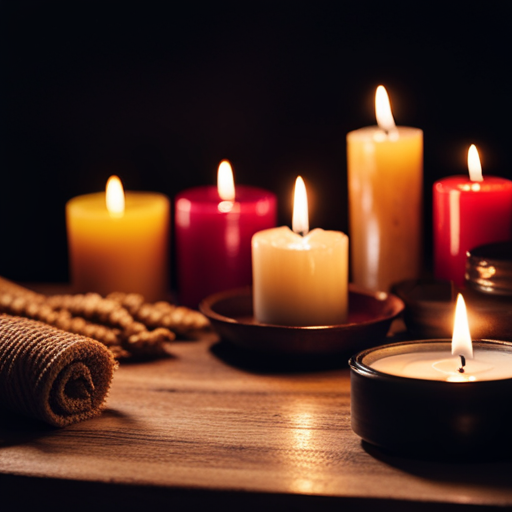Soy wax, known for its clean burn and strong fragrance hold, is a popular natural option.
Paraffin wax, although cheaper, emits chemicals when burned.
We will also discuss budget-friendly wax options, the unique qualities of beeswax, and the importance of choosing natural waxes for a cleaner home environment.
Stay tuned for all the tips and recommendations!
Key Takeaways
– Soy wax is the best natural wax for wood wick candles due to its clean burn and ability to hold fragrance well.
– Blends of soy wax with other waxes like coconut oil, paraffin wax, or beeswax can be more budget-friendly while still maintaining fragrance.
– Beeswax is expensive and may not burn evenly with wood wicks.
– Using natural waxes is recommended to avoid polluting the air inside your home.
Benefits of Soy Wax for Wood Wick Candles

https://www.youtube.com/watch?v=otT0f6GWasc
Soy wax is the preferred choice for wood wick candles due to its ability to burn clean, hold fragrance well, and provide a more natural and sustainable option.
When it comes to burning clean, soy wax produces less soot and releases fewer toxins into the air compared to other waxes like paraffin. This makes it a healthier choice for both you and the environment.
Additionally, soy wax has a great fragrance-holding capacity, allowing the scent of the candle to fill the room and last longer.
It also offers a more sustainable option as soy is a renewable resource and can be grown without causing harm to the planet.
Overall, soy wax is a fantastic choice for those who prioritize clean burning, strong fragrance, and sustainability in their wood wick candles.
Exploring the Pros and Cons of Paraffin Wax
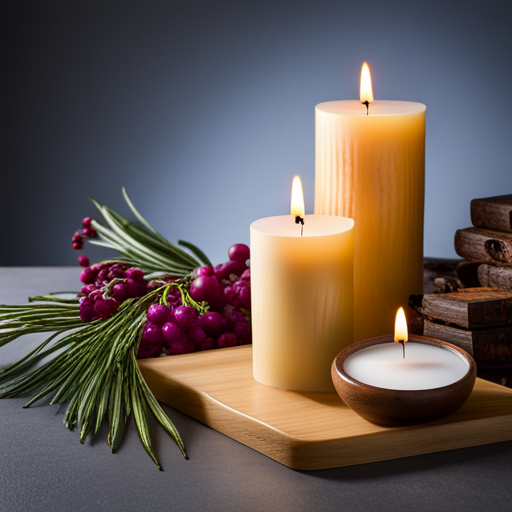
Paraffin wax, although a cheaper alternative to soy wax, emits chemicals when burned. This is one of the main drawbacks of using paraffin wax for wood wick candles. When paraffin wax is burned, it releases toxins such as benzene and toluene into the air. These chemicals can be harmful to human health, causing respiratory problems and even cancer in the long term.
In addition, paraffin wax is derived from petroleum, a non-renewable resource, making it less environmentally friendly compared to soy wax. Despite its lower cost, the potential health risks and negative environmental impact associated with paraffin wax make it a less desirable choice for those who prioritize clean and sustainable candle burning.
Budget-Friendly Wax Options for Wood Wick Candles
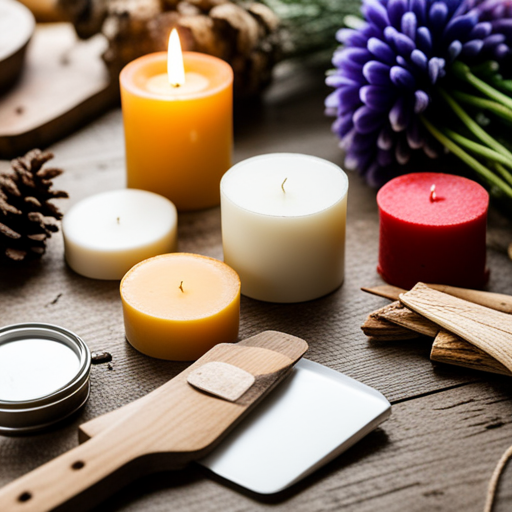
Coconut oil blended with soy wax and beeswax can be a more budget-friendly alternative for wood wick candles. This blend offers a cost-effective option without compromising on fragrance or burn quality.
Here are some reasons why this blend is worth considering:
1. Affordability: Coconut oil and beeswax are relatively inexpensive compared to pure soy wax, making them a budget-friendly choice.
2. Fragrance retention: Soy wax is known for its excellent fragrance-holding properties, and the addition of coconut oil and beeswax enhances this quality.
3. Clean burn: The combination of these waxes promotes a clean and even burn, ensuring a longer-lasting candle.
4. Sustainability: Coconut oil and beeswax are natural and eco-friendly ingredients, making them a greener alternative for environmentally conscious consumers.
The Unique Qualities of Beeswax for Wood Wick Candles

Beeswax offers a unique natural smell and can be a luxurious option for wood wick candles. It is known for its high melting point, which means it can withstand higher temperatures and burn longer than other waxes. Beeswax also has a beautiful golden color that adds a touch of elegance to any candle. However, there are some considerations when using beeswax for wood wick candles. Beeswax is more expensive compared to other waxes, and it may not burn as evenly with wood wicks. Additionally, the natural scent of beeswax can overpower the fragrance of the candle. Despite these factors, many people enjoy the natural and luxurious qualities that beeswax brings to their wood wick candles.
| Pros | Cons |
|---|---|
| Natural smell and color | Expensive |
| High melting point | May not burn evenly with wood wicks |
Choosing Natural Waxes for a Cleaner Home Environment

Using natural waxes for wood wick candles can help create a cleaner and healthier environment in your home. Here are some reasons why choosing natural waxes is beneficial:
1. Non-toxic: Natural waxes, such as soy wax and beeswax, do not emit harmful chemicals when burned, unlike paraffin wax which can release toxins into the air.
2. Clean burn: Natural waxes have a clean burn, meaning they produce less soot and smoke compared to synthetic waxes. This helps to maintain the air quality in your home.
3. Renewable and sustainable: Natural waxes are derived from renewable resources, making them a more sustainable choice. Soy wax, for example, is made from soybeans, which are a renewable crop.
4. Eco-friendly: By opting for natural waxes, you are reducing your carbon footprint and contributing to a greener environment. These waxes are biodegradable and do not harm the planet when disposed of.
Understanding the Different Types of Wood Wicks
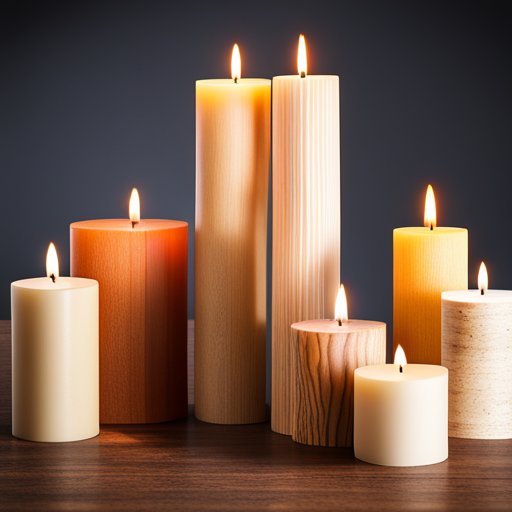
When it comes to creating wood wick candles, understanding the different types of wood wicks is essential.
Wooden wicks come in three varieties: spiral, single-ply, and booster wicks.
Spiral wicks, with their hollow center, are perfect for larger diameter candles.
On the other hand, single-ply wicks, being thin, are best suited for smaller candles with a diameter under 2 inches.
For slower-burning fragrance candles made with natural waxes, booster wicks, which are thicker, are a great choice.
Additionally, it’s worth noting that soft wood wicks produce a more satisfying crackling sound compared to their hard counterparts.
Best Wood Wick Choice for Larger Diameter Candles

Spiral wicks, with their hollow center, are suitable for larger diameter candles and provide a satisfying crackling sound. They are a popular choice among candle makers for creating a unique sensory experience. Here are some reasons why spiral wicks are the best wood wick choice for larger diameter candles:
1. Size: Spiral wicks are designed to fit larger candles, making them ideal for creating statement pieces or centerpiece candles.
2. Crackling Sound: The hollow center of spiral wicks allows air to flow through, creating a delightful crackling sound that adds to the ambiance of the candle.
3. Even Burn: The design of spiral wicks ensures an even burn, preventing tunneling and maximizing the lifespan of the candle.
4. Visual Appeal: Spiral wicks create a visually appealing look, with their unique shape and the way they burn, adding an extra touch of elegance to the candle.
Ideal Wood Wicks for Smaller Diameter Candles
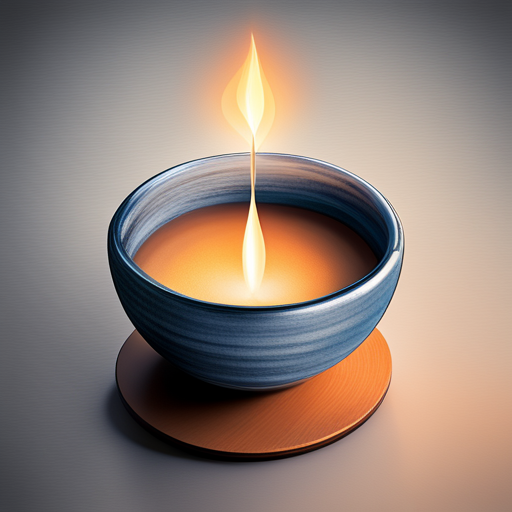
Booster wicks, known for their thickness, are a great option for smaller diameter candles and can enhance the burn time and fragrance of the candle. These wicks are specifically designed to provide a longer and more consistent burn, allowing you to enjoy your candle for a longer period of time.
The thicker wick also helps to distribute the fragrance more evenly, creating a stronger and more aromatic scent in the room.
Additionally, booster wicks are ideal for slower-burning candles made with natural waxes, as they can help to maximize the burn time and ensure that you get the most out of your candle.
Enhancing Fragrance With Booster Wicks and Natural Waxes
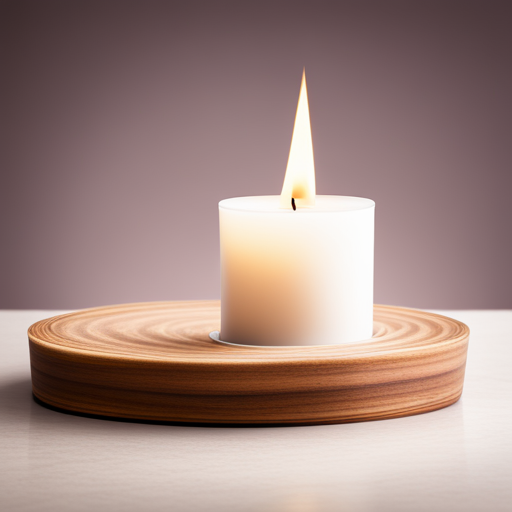
Using a combination of booster wicks and natural waxes can enhance the fragrance of your candles. Here are four ways to achieve this:
1. Choose the right wax: Opt for soy wax as it burns clean and holds fragrance well. Blends of soy wax with coconut oil, paraffin wax, or beeswax can also be budget-friendly options.
2. Consider wood wick types: Booster wicks, which are thicker, are great for slow-burning fragrance candles made with natural waxes. Spiral wicks work well for larger diameter candles, while single-ply wicks are ideal for smaller ones.
3. Prioritize safety: Wood wicks are safe to burn, as they are sustainably sourced and free of harmful chemicals. They are a better option compared to cotton wicks.
4. Enjoy the crackling sound: Wood wicks produce a pleasing crackling sound, adding to the charm of the candle. This sound can vary based on factors like the wax type and fragrance content.
Safety Comparison: Wooden Wicks Vs. Cotton Wicks
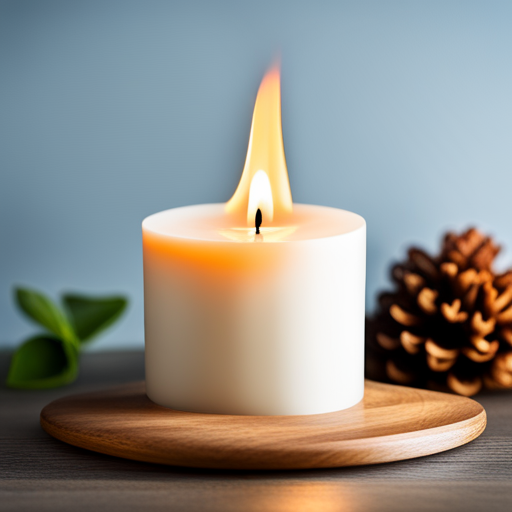
When comparing safety, wooden wicks are often favored over cotton wicks due to their sustainable sourcing and absence of harmful chemicals. Wooden wicks are sustainably sourced and free of chemicals that can pollute your home, making them a safer choice for candle burning. In contrast, cotton wicks use more wax and can produce carbon, causing smoking and ruining the scent and appearance of the candle. Wooden wicks burn evenly, produce less smoke, and are more natural and clean. They also create a pleasing crackling sound, which many people prefer. However, it is worth noting that wooden wicks may take longer to light and can be harder to keep alight compared to cotton wicks. Overall, wooden wicks offer a safer and more enjoyable candle burning experience.
| Wooden Wicks | Cotton Wicks |
| Sustainable sourcing | Less sustainable |
| Absence of harmful chemicals | Potential carbon emissions |
| Even burn | More smoke |
| Natural and clean | Less natural |
| Pleasing crackling sound | No crackling sound |
Which Type of Wax Is Best for Holding Fragrance Oil in Wood Wick Candles?
When it comes to wood wick candles, choosing the right type of wax is crucial for optimal fragrance throw. Soy wax is a great option as it can hold a high fragrance oil per pound, allowing for a strong and long-lasting scent. Beeswax and coconut wax are also good choices for fragrance retention.
Frequently Asked Questions
Can I Use Other Types of Wax Besides Soy Wax for Wood Wick Candles?
Yes, other types of wax can be used for wood wick candles. While soy wax is the best natural option, blends with coconut oil, paraffin wax, or beeswax can be more budget-friendly and still hold fragrance.
What Are the Advantages and Disadvantages of Using Paraffin Wax for Wood Wick Candles?
Paraffin wax is a cheaper option for wood wick candles, but it emits chemicals when burned. It may produce a stronger crackling sound and is more widely available, but it’s not as clean or eco-friendly as soy wax.
Are There Any Budget-Friendly Alternatives to Soy Wax for Wood Wick Candles?
Yes, there are budget-friendly alternatives to soy wax for wood wick candles. Blends of soy wax with coconut oil, paraffin wax, or beeswax can be more affordable options while still holding fragrance well.
What Makes Beeswax Unique for Wood Wick Candles and Are There Any Drawbacks to Using It?
Beeswax is unique for wood wick candles due to its natural smell and luxurious appeal. However, it may not burn evenly with wood wicks, which can be a drawback.
How Do Natural Waxes Contribute to a Cleaner Home Environment When Used in Wood Wick Candles?
Natural waxes contribute to a cleaner home environment when used in wood wick candles because they burn clean and don’t emit harmful chemicals. They are a safer and more eco-friendly option for creating a cozy and pleasant atmosphere.

